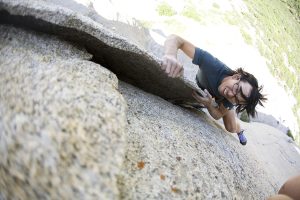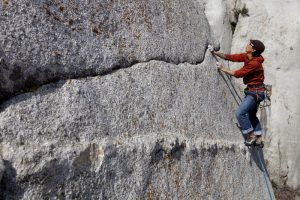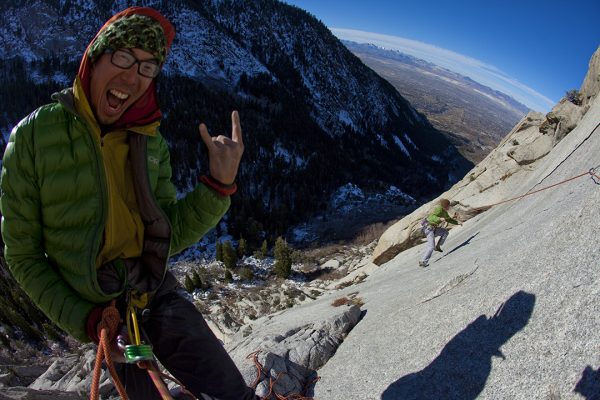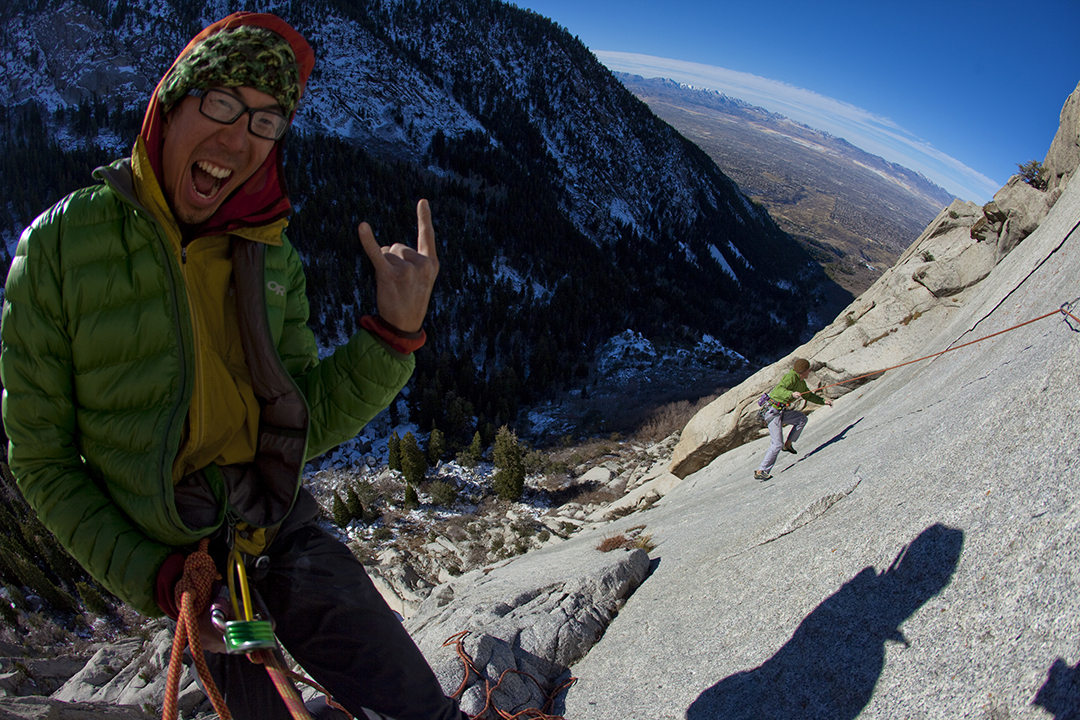
Shingo Ohkawa believes that climbing has been a wonderful sport for him due to the inclusive nature of climbers rather than the exclusive cliques climbing groups produce.
When in Salt Lake City, Shingo Ohkawa can be found working at the climbing equipment shop, IME (International Mountain Equipment). There, he finds himself in an interesting and sometimes, conflicting spot when it comes to the materialism side of the climbing culture. “In this town, or towns like Boulder, Colorado, or other places, it’s become sort of a subculture,” Shingo says. “You’re kind of identified in your tribe by what you wear and what you’re seen with. That’s sort of weird ‘cause climbing, before it got popular, used to be something that only fringe people did.” This “clique” side of climbing is a far cry from what Shingo is familiar with.
New York native, Shingo Ohkawa, has been a steady, socially conscious presence in the Utah climbing scene. Other than traversing Utah’s mountain ranges, he has spent time climbing around the world, in places such as Pakistan and Argentina.

Shingo was introduced to climbing at young age. “My mother lived in New York, and we lived very close to one of the more storied climbing areas in North America. It’s called the Shawangunks,” Shingo says. “It’s outside of New Paltz, New York… It’s a private preserve, and you have to purchase an annual pass in order to access it.”
The annual pass funds would go to maintaining trails and stewardship. Shingo’s family would purchase passes and go climbing together—although he admits to being busted by his mother for soloing (climbing without a rope) on many occasions. He says, “[my mother] got me started by hiring me a climbing guide initially, when I was 10-years-old. So I guess I’ve been climbing since then, but on and off.”

This passion for climbing has followed Shingo throughout his life. After college, he found himself working for a climbing shop in Pittsburgh, Pennsylvania. In May of 2007, he and his partner relocated to Salt Lake City, to take advantage of the cathedral-like granite formations.
Shingo’s involvement in Utah’s climbing scene saw him discovering and putting up new routes in the Lone Peak Cirque and Hogum Fork. Shingo is still adjusting to Utah.
On the east coast, he observes that the climbing scene tends to be more isolated but has more solidarity with stewardship issues in comparison with Utah’s. Shingo says, “It’s much more dynamic here and, gosh, to be perfectly honest, it’s a lot more cliquey.”
The comparison is drawn from the fact that the opportunity to climb the Wasatch Front is readily available and, therefore, he explains, one can forget that it’s a privilege. It’s a concern that accompanies the rising popularity of climbing in Utah.
Shingo has worked with several groups like Red River Gorge Climbers Coalition and the Salt Lake Climbers Alliance, helping to maintain trails and provide stewardship. While working at IME, alongside other veterans of Utah’s climbing scene, he also takes the opportunity to advise new climbers on how to take care of the trails they are about to explore, as well as live vicariously through their new experiences.
But, Shingo says, “Really, what I would love to do is go climbing with people.”



